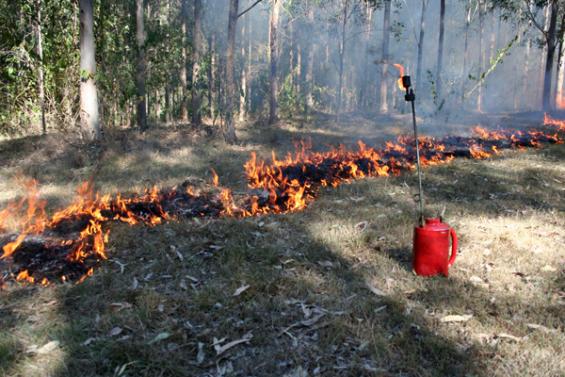Environmental Impact of Prescribed and Wildfire

Prescribed fires over large forest areas are essential to reduce the risk of large-scale bushfires, particularly in forests near population centres and important forest assets such as water catchments and commercial plantations. However, prescribed fires release emissions and reduce forest carbon stock. It has been widely recognised that prescribed fires reduce loads of leaf litter, yet fire impacts on other major carbon pools such as overstorey trees, shrubs, ground cover, coarse woody debris and soil organic matter has not been well documented for southern Australian forests.
This research by Dr Chris Weston and Dr Liubov Volkova, from the University of Melbourne, found that carbon emissions from low-intensity prescribed burns in south eastern Australia were much lower than carbon emissions from bushfires.
Over the three years of research, 61 study plots were established in long unburnt eucalyptus forests across Victoria, Tasmania, South Australia, Queensland and the ACT. Forest types measured included dry sclerophyll, lowland, open, shrubby dry and coastal forests.
The project measured forest carbon stocks and the impact of prescribed fire on these stocks through release of greenhouse gases to the atmosphere and redistribution of carbon within the forest. Results showed that calculating the carbon emissions based on the fine fuel load significantly underestimated the total carbon emissions because of the contribution of coarse fuels to the total.
It was also found that prescribed fire released only a minor fraction of the carbon stored in forests (2-3%), and that 2% of the carbon that was previously considered to have been lost to the atmosphere in gaseous and particulate form remains in the forest through redistribution.
An opportunistic study in eastern Victoria compared the effects of bushfire and prescribed fire on carbon pools and emissions. Study sites in a long unburnt forest that was subsequently burnt by a bushfire were compared with study sites in the same forest that was burnt by prescribed fire, then three months later burnt by bushfire. In this instance, results showed that prescribed fire three months prior to the bushfire significantly reduced the carbon emissions from the bushfire.
As a result of the research, the knowledge of forest carbon balances has improved drastically by quantifying the impact of fire on forest carbon stocks and providing more reliable estimates of the magnitude of emissions produced during planned and unplanned fire.
These results will help forest managers and policy makers to predict fire impacts on carbon losses and the magnitude of greenhouse gas emissions over a range of forest types and burn conditions. This knowledge will enable fire managers to achieve fuel reduction targets whilst minimising greenhouse gas emissions to the atmosphere.
In addition, Hari Ram Shrestha’s PhD research at the University of Melbourne explored the effects of long-term, repeated prescribed fire on litter and soil carbon and nitrogen in a mixed eucalypt forest. His work sought to understand the impact of repeated prescribed fire on litter and soil and nutrient cycling for sustainable management of Australian native forests.












